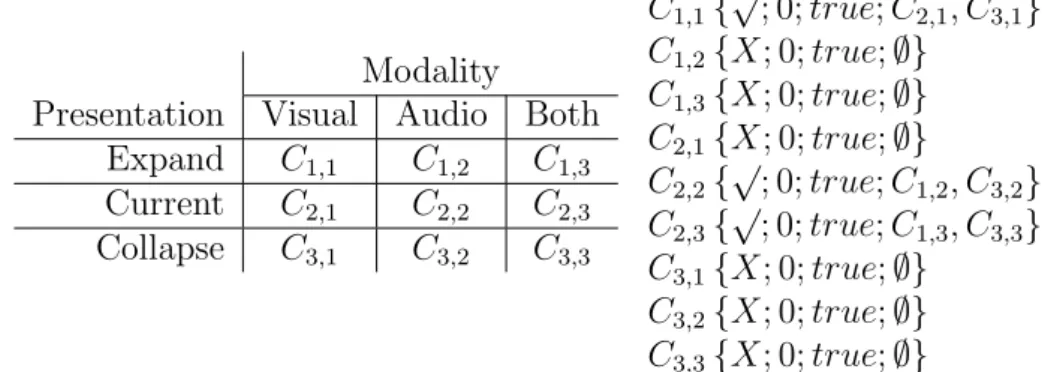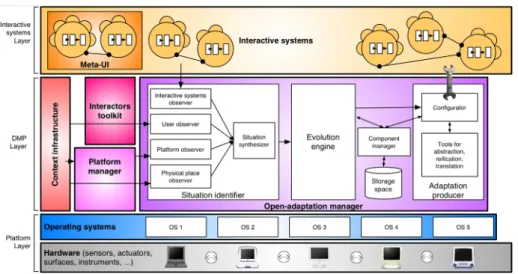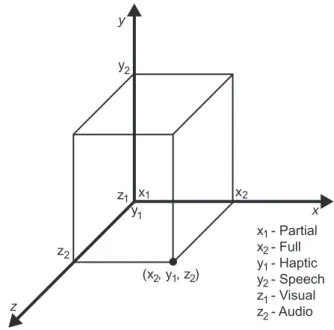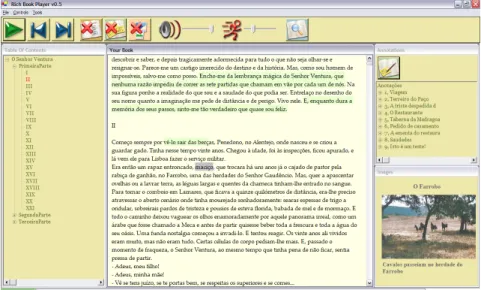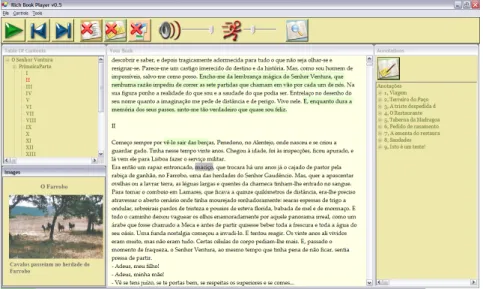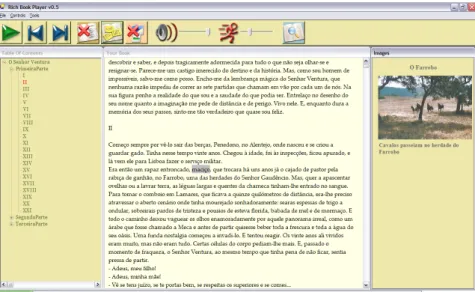In addition to these assessments, behavioral complexity metrics calculated according to the proposed methodology were able to distinguish between adaptive and non-adaptive versions of the player. It continues with a summary of the methodology used, the results achieved and the contributions.
Overview
Motivation and Relation to Research Projects
In the initial phase, the problems discovered during the implementation of the projects motivated the work in the thesis. These requirements required the construction of a flexible multimodal application that was aligned with the objectives of the thesis.
Challenges
Several explanations have been put forward, including the fact that a properly executed customization will be largely invisible to the user of the system. A further goal is to reuse the process or design a new one to use a metric to compare the adaptive capabilities of a system against its available features.
Research Methods Employed
Identification of a set of metrics traditionally used in the evaluation of adaptive systems, which can be measured through an empirical evaluation. Conducting an empirical evaluation of the adaptive multimodal system based on the developed framework.
Results
This metric measures workload and, to the author's knowledge, has not been used for this purpose. While it revealed a lower workload for the users of the adaptive version, it failed to reach statistical significance, disproving the hypotheses that it could be used to differentiate between adaptive and non-adaptive versions.
Contributions
List of Publications
- Design of Adaptive Multimodal Systems Publica-
- Evaluation of Adaptive Multimodal Systems Pub-
- Other Related Publications
A flexible interface architecture for digital talking books Carlos Duarte, Lu´ıs Carri¸co, Hugo Sim˜oes. User and Usage Driven Adaptation of Digital Talking Books Carlos Duarte, Lu'ıs Carri¸co.
Dissertation Structure
- Contexts of Adaptation
- Adaptation Methods
- Knowledge Representation
- Stereotypes
- Overlay
- Knowledge Acquisition Techniques
- Potential problems for adaptive interfaces
- Mitigation strategies
The evaluation of the entries in the user model and the comparison with given standards. This mental model can be interpreted as the user's view of the application's working internal model.
Multimodal interfaces
- Advantages of Multimodal Interfaces
- Flexibility
- Stability and Robustness
- Efficiency
- User Preferences
- Evolution and Future of Multimodal Interfaces
- Designing Multimodal Interfaces
- Differences to Graphical User Interfaces
- Interaction Patterns
- Integration Patterns
- Multimodal Fusion
- Multimodal Fission
- Guidelines
- Maximize human cognitive and physical abilities 46
- Feedback
- Error Prevention/Handling
For example, the Quickset system integrates speech with pen input, including drawn pictures, symbols, gestures, and pointing (Cohen et al., 1997). Third, users have a strong tendency to switch modes after system recognition errors, which facilitates error recovery (Oviatt et al., 2000). 25% of user commands actually contain a spoken word that overlaps with the clue needed to disambiguate the meaning (Oviatt et al., 1997).
Unification-based integration techniques have also been used in the design of multimodal systems (Cohen et al., 1997; Johnston et al., 1997). Other systems use rules to allocate representation components across modalities (Bateman et al., 2001). ; Feiner & McKeown, 1991).
Design and Development Frameworks
- ICARE
- Elementary Components
- Generic Composition Components
- Systems developed with ICARE
- Plastic User Interfaces
- Framework
- Systems developed with the plasticity framework 56
- The CAMELEON-RT Architecture
- Systems developed with the CAMELEON-RT ref-
- Unified User Interfaces
- Systems developed with the Unified User Interface
- Discussion
The feedback execution corresponds to the change in the new version (eg, new presentation, . sounds, resume of suspended task). The feedback execution corresponds to the change in the new version (eg, new presentation, new dialogue sequence or execution of a specific task). The enumeration of design alternatives is achieved through analytical design techniques (such as design scenarios, visioning, ethnographic methods) which facilitate the identification of possible design options for different user groups, computing platforms, environments and use situations, etc.; The collection of all alternatives, at all levels of interaction, constitutes the interface design space.
The other two subsystems (i.e., the monitoring control, the modeling, and the inference) are only necessary in the case that dynamic user attribute detection is required. For example, a heuristic pattern for detecting loss of orientation has been defined as ``the user moves the cursor inside the web page display area, without selecting a link, for more than N seconds''.
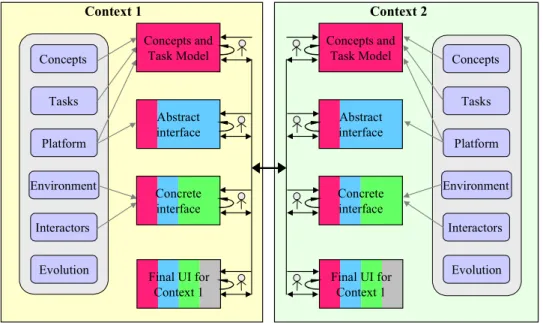
Evaluation Methodologies
Empiric Evaluation
Controlling the training effect is achieved by randomly assigning the sequence of independent variable conditions to each participant. Both quantitative and qualitative analysis can be applied, depending on the specification of the criteria and methods used. The interpretation of the results can be used to recommend the system or to recommend modifications.
When evaluating adaptive systems, the specification of the adequate control conditions can pose an important problem. The solution traditionally consists of comparing an adaptive and a non-adaptive version of the same system (Brusilovsky & Eklund, 1998).
Layered Evaluation
This step checks the correctness and accuracy of the user properties extracted by the system. Implementation of adaptations: Refers to the actual introduction of adaptations in the user-system interaction, based on relevant decisions. Adaptation: Refers to the type of adaptation used (static or dynamic) in the different stages of the adaptation process.
Development Process: Refers to the stages of the software development cycle used in the development of the adaptive system (analysis, design, implementation and maintenance). Evaluation modules: Refers to the layers of the adaptive system that are evaluated in the context of the other dimensions.
Evaluation Criteria
- Structural Characteristics
- Behavioral Complexity
The suggested approach is to evaluate each of the layers in relation to the other frame dimensions. One of the goals of adaptivity is to reduce the complexity of interaction and thus help users achieve their goals more easily. This can be achieved by shifting the division of labor between user and system, where the system takes over routine tasks, such as planning, sorting or selection, or by reducing the complexity of the task itself.
To assess the complexity of state transition networks, four complexity measures, derived from graph theory, are introduced in Rauterberg (1992), based on earlier work by Stevens et al. Analysis of the empirical results revealed that the experimental group required less time and were more satisfied with the interaction.
Summary
Adaptation Module
- Models
- Behavioral Matrix
- Rule Processing
This happens in response to changes in the context of use and as a result of customization decisions. The customization module updates these three models to reflect changes in the usage context. One behavior matrix is defined for each component included in the interaction model.
In connection with the previous example, consider a situation where the system detects that a microphone is disconnected. Cells become active or inactive through rule activation, reflecting changes in the application's behavioral state, prompted by observations of user interaction and responses to application-generated events.
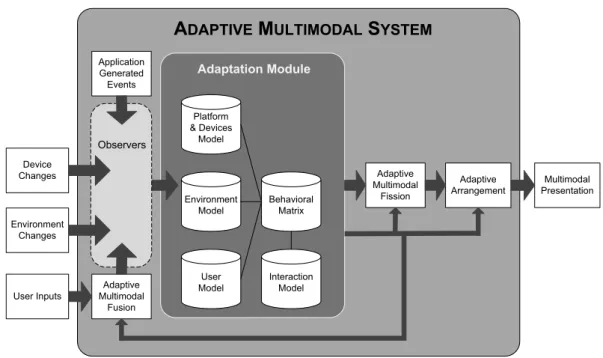
Adaptive Multimodal Layer
- Input Processing
- Output Generation
An observer is defined as a process of the adaptive multimodal layer that is responsible for obtaining information from an input source, translating that information into a format that can be recognized by the adaptation module, and forwarding it to the adaptation module. This allows the weights and the integration patterns to be adjusted to best suit the current context of use, thus improving the performance of the fusion process. In a similar way to what is done in the multimodal fusion process, the parameters of the multimodal splitting process are also controlled by the adaptation module.
Besides this division of the information into different modalities, it is also the responsibility of the fission process to coordinate the presentation of the different modalities. The adaptive arrangement component implements the arrangement of the data to be presented in each modality.
Development Process
- Adaptable Components and Adaptation Variables
- Attribute Selection
- Template Design
- Multimodal Operations Definition
- Adaptation Rules Definition
Adaptation variables in the development process are translated into attributes of various models in the architecture. Selecting the attributes of the various models is the next step in the development process. The next step is to develop various templates that incorporate the interaction model.
Next in the development process is the definition of the operations for multimodal fusion and fission. Selection of attributes for the User model, the Environment model and the Platform & devices model.
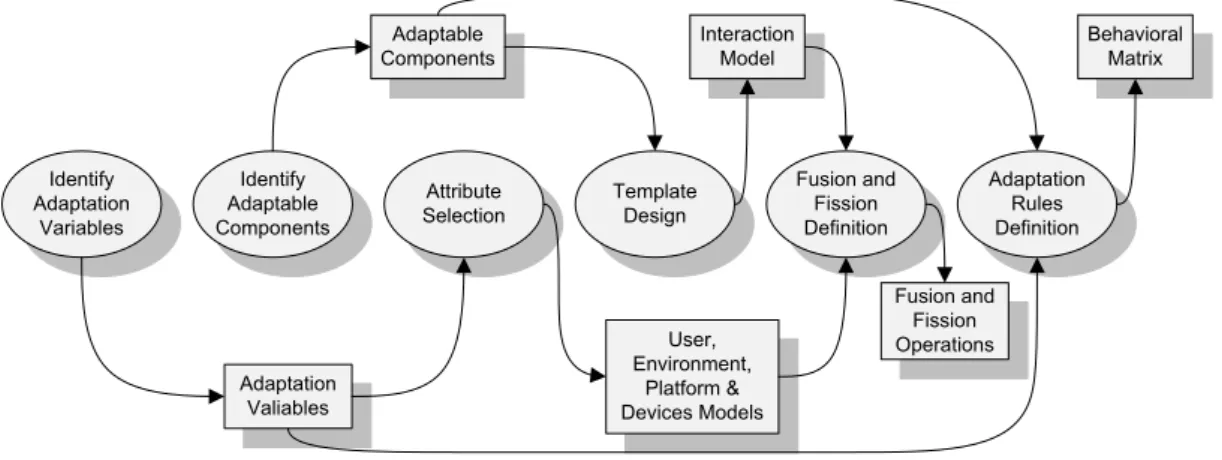
Summary
Evaluation of current DTB Players
Duarte & Carri¸co (2005) present a heuristic evaluation of eight of the players referred to in the list. Other players do not support resizing the fonts used for the table of contents and annotations. Of the players that support bookmarks, only one does not automatically create a bookmark on stop.
Some players also read the table of contents entries aloud, either using pre-recorded speech or through synthesis. Another essential feature, "presentation of visual elements in alternative formats", is neglected by all actors.
Enhancing the DTB experience
In summary, the players analyzed do not follow several of the recommendations of the ANSI/NISO Standard Development Committee. Details about the authoring platform are beyond the scope of this thesis, but can be found in Carri¸co et al. For this type of reading, special features such as different reading speeds, skipping over unimportant sections or marking sections of the text for future reference assume greater relevance and deserve attention that they have not yet received from current DTB players.
The visual presentation of annotated material can be supplemented by the definition of new reading paths, based on previous marks to focus on material of greater interest to the reader. A similar work is presented in Card et al. 2004), but places greater emphasis on a traditional book metaphor, while ignoring the use of audio, either as speech or supporting sounds.
Enhanced DTB and Multimodal Adaptivity
From this results the concept of Enhanced DTBs: DTBs with complementary media content such as background music, ambient noise, video clips and any other media capable of complementing the original work and with the potential to provide a more entertaining experience to the reader. The combination of modalities, together with the diversity of users with widely varying characteristics and the possibility of operating in different environments, also make a DTB player a platform well tailored to the use of adaptation mechanisms. Different usage situations, defined by the task and operating environment, will make use of the platform's multimodal features in different ways.
Managing the interaction options should not become a burden for the user, who is expected to remain focused on the task at hand. This issue becomes critical when considering people with disabilities, who are part of the target audience for this type of product.
Developing the Rich Book Player
Adaptable Components
The development process begins with the identification of adaptive components and their corresponding behavioral dimensions. List - the default content of the annotation component is a list of generated annotations, with the selected annotation only displayed while the annotation text is displayed. Item - Annotations text remains the content of the Annotations component until the user requests a list of annotations.
Collapsed - index entries are presented collated and the user is responsible for navigating to the presumed entry - Current - only index nodes leading to the current one. Synchronization - determines the fragmentation of the visual marking that accompanies the audio narration of the text.
Attribute Selection
The use of FAME in the RBP development process has substantiated its advantages. Rin represents a set of constraints that include a value in the same state dimension Sij. Compare adaptive and non-adaptive versions of Rich Book Player with empirical evaluation.
Questions regarding the usability of the features available in the Rich Book Player have not been considered in this analysis. Participants in the adaptive group rated the notes aspects of the app higher on average. How moving from a non-adaptive application (in a controlled environment) to a fully adaptive application changes participant opinion.
Remember that a significant result was found in the controlled experiment, implying a significant increase in results from the non-adaptive group to the adaptive group.
